Locating land for Tiny Houses and other parking options
By John Russell
One of the most common questions I hear centers around where people can live in tiny houses legally. The challenge is that in many communities the definition of what qualifies as a residential home has been too tightly defined. For example, one of the things you’ll find are square footage minimums that define the smallest size a home can be, which can often be several hundred or thousand square feet.
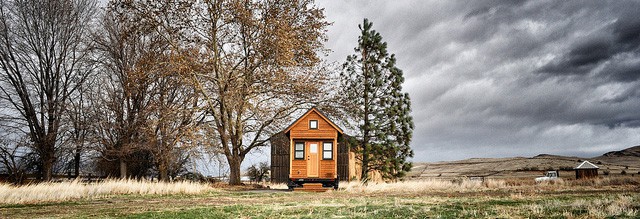
Source: Tammy Strobel
I personally think all these rules are insanity because who in their right mind could determine a fixed minimum house size for everyone in a community. If the powers that be are trying to protect home values in the neighborhood they’ve also lost touch with reality because real estate appraisers will typically use similar properties for value comparisons. Luckily there are some ways to work within the system – to get around the system.
Avoid building codes
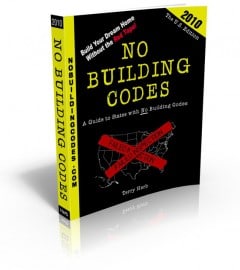 Begin by finding communities that don’t have a lot of building restrictions. There’s a good ebook to start your search called No Building Codes written by Terry Herb at Containerist. The ebook outlines the building codes for each US State, at the state-level. If you are open to relocating and want to a quick reference by your side when seeking out states with few (if any) restrictions this is a good ebook to have.
Begin by finding communities that don’t have a lot of building restrictions. There’s a good ebook to start your search called No Building Codes written by Terry Herb at Containerist. The ebook outlines the building codes for each US State, at the state-level. If you are open to relocating and want to a quick reference by your side when seeking out states with few (if any) restrictions this is a good ebook to have.
‘Camp’ on your land
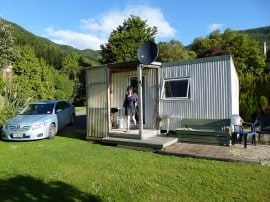
Source: mrcjhicks
Trailer-based tiny houses are usually seen by most municipalities as RV trailers since they are built on wheels. So you can typically live in a tiny house anywhere it’s legal to ‘camp’ on your own land. This is not always permitted so check the local ordinances with local law enforcement and/or the planning department. Other issues may still apply like how you’ll need to deal with waste water and drinking water.
Alternate zoning
Look for multi-family zoned land. Typically there is no minimum unit size defined for multi-family zoned property which allows apartment building to have small apartments. It’s possible that with the right proposal, a planning department may approve building the first unit of a multi-unit tiny house development.
Trailer park
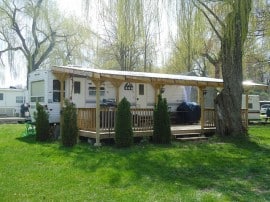
Source: Meg Stewart
Rent space at a trailer park. Some trailer parks have restrictive requirements like many homeowners’ associations, so avoid those. But many will be happy to have you park your custom trailer home in along side the other trailers.
Build an eco-village
Consider buying an existing trailer park or campground with friends and turn it into an eco-village. This is one of my favorite tiny house community concepts because the zoning and infrastructure are already in place at these kinds of properties; although I’ve yet to see someone give it a try.
Move out to the countryside
Many rural areas, even near major metropolitan areas will be more flexible with living solutions. There are many areas where migrant housing has already set precedents and paved the way for tiny house living.
Backyard camping
A friends backyard might be a viable option if ‘camping’ is be allowed in your area. Setting up a tiny home in a backyard may also legally comply with the laws that support ADUs (accessory dwelling units). Even here in regulation-ridden California we have laws that permit the addition of in-law units.
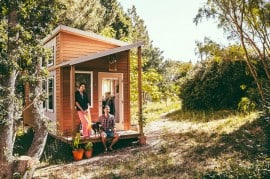
The Tiny Project hides in plain sight.
Photo © Sunset Magazine
Hide in plain sight
I’m not advocating breaking the law but many people have found that simply setting up housekeeping in plain view works fine. The reason this works is that something so cute and in plain view is seen as a quality contribution to the neighborhood, not an eyesore. Onlookers seem to assume it’s some kind of cute shed, playhouse, or home office and just smile and continue on their way. Few would assume someone actually lives there, after all, who could live in a house so small? LOL
Seek a variance
This is essentially asking the local planning department to consider an exception to the rule. If you work the green angle and diversity angle you may get more traction. There is quite a bit of risk with this approach because you have to buy the land before you can apply for building permits.
 About the Author: John Russell is an avid tiny home builder and lover of nature. He's currently working on new ways to live tiny in Texas and other southern states.
About the Author: John Russell is an avid tiny home builder and lover of nature. He's currently working on new ways to live tiny in Texas and other southern states.
John points out some great tiny house parking options! It turns out there are many options when looking for land or a place to park your tiny house. Some may fall into a legal gray area, but if you are willing to deal with a little bit of zoning uncertainty, then it opens up a lot of options, even for those who can't afford to buy land themselves.
Don't wait for cities to change their zoning codes to make tiny houses completely legal. Just go for it. There are plenty of people willing to support you in finding a great place to live in your tiny!


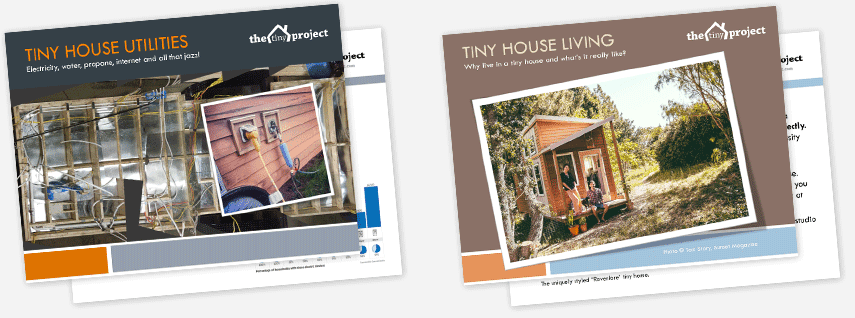
John, enjoyed this informative article, I am planning to relocate back to the San Marcos area from Rockport (Texas). Land has become out of sight in the San Marcos / Wimberley / New Braunfels area, have any ideas for me re: these areas? Plan on buying a Tennessee Tiny Home. I am 65.
very informative article and your beautiful tiny house is easily one of my favourites--bravo! my husband and i are currently renovating an office trailer in his mother's backyard as a tiny house for our family. do you know of anyone (preferably a tiny house enthusiast ;)that can help with the pitched roof? this is our biggest construction hurdle! please let me know,
many thahks,
andrea
Looking for small space to rent can put my tiny house, ojai,ca. Thank you
My husband is building our tiny house for our family in Portland Oregon but it’s hard to find a spot for rent! So, we don’t know where to start looking?? Thank you! Sincerely, from the Montano family!!
I am interested in finding land to buy..to put my little house on wheels....Want to go half's? On land?...
I am in California. jeannie.perri1@gmail.com
Hi! I'm actually living in New Zealand now, so not interested in buying land in CA. Best of luck!